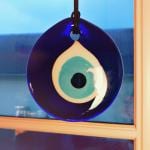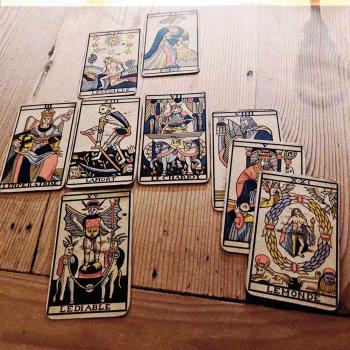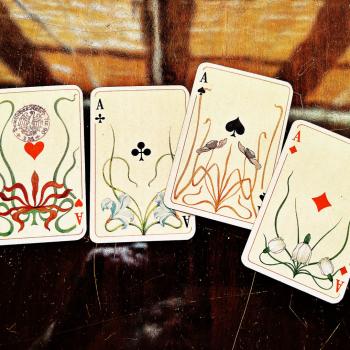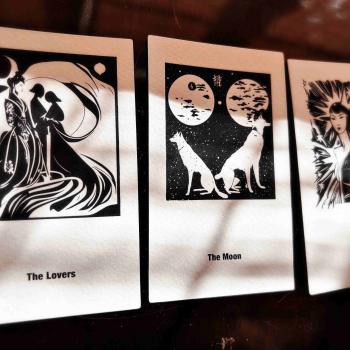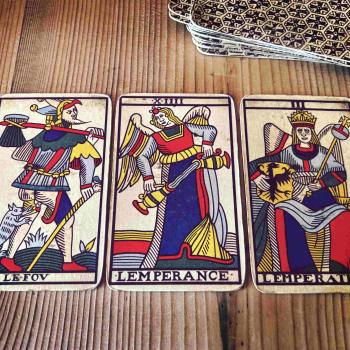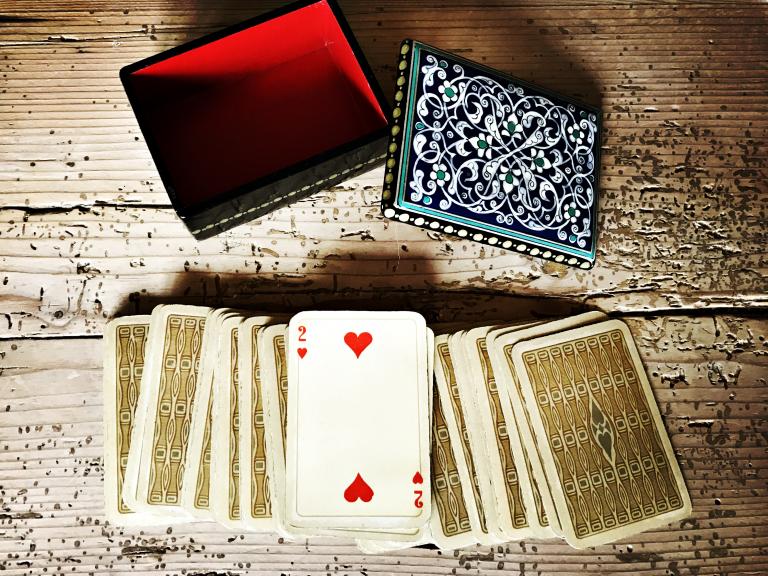
As with all things divination, we often come to the cards, not because we’re lazy, or live a life of superstition or belief. Rather, we come to the cards simply because we like to see what images tell us about a situation that we can’t put into words first.
And why do we want to see images, or go to images before we activate our linguistic vocabulary and competence when we have to address or describe a situation? Because words, more than images, are set in conventional thinking.
Reading an image is, of course, also subject to ‘what we make of it’ in terms of words, for words are all we’re got to navigate what we call an understanding of the world and our surroundings. An image presents itself to us in form, color, lines, and a rhythm that’s different than the rhythm of our voice when we articulate the words, whether loudly or silently. So we see things in images that the words can only sense.
Granted, words are also made up of form, lines, color, and rhythm – anyone working with calligraphy and typography would tell you just how much – but how many notice that? How many think, ‘it’s all calligraphy, glyphs, and symbolic images I’m dealing with when I say, ‘I’m sad today?” To my knowledge and experience, the only people holding this awareness are the Zen masters, or the ones deeply invested in deconstructing language and what it does to us.
Most other mortals simply assume that words have meaning, or that they designate a meaningful situation representing ‘reality’ – that is, until the point when the meaning of ‘I do’ declared in church also acquires the nature of deep hatred, when ‘I don’t anymore’ is declared in the divorce court. Indeed, meaning that’s meaningful galore…
I’ve written on just what I think of the idea that ‘words have meaning’ on a number of occasions – in larger format in my book, What is Not: Marseille Tarot à la Carte – and I experience it almost every day that people ask me about ‘the meaningless’ in word and image, but here I actually want to bring your attention to a similar situation, namely the situation when looking at the cards for an answer prompts you with more questions, questions that arise from a place right beyond the words.
Just today I read the cards for a pain in the body, more precisely in my left foot. It’s been there for a while, and it doesn’t look like it’s going away. I’ve no idea what causes it.
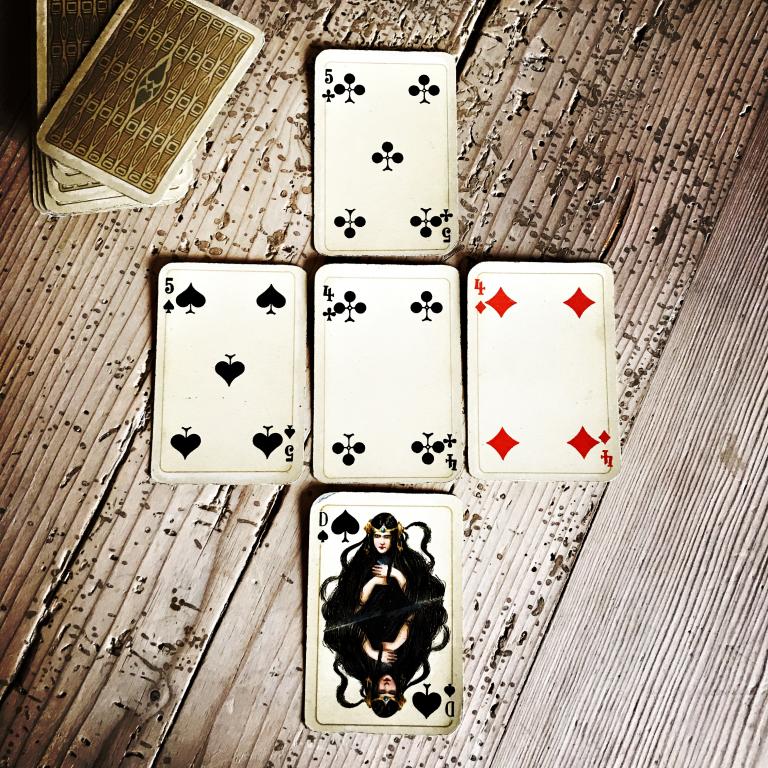
The pain got represented here by the 5 spades. Two 4 cards, 4 clubs and 4 diamonds, suggesting the set and the solid following the 5, made me respond with, ‘it can’t be helped,’ or at its most optimistic my response to the image was that ‘it is what it is.’
Then, however, instead of finding a solution, in spite of declaring that things are as they are, I went with a question to myself, looking at the card on top, the 5 clubs: ‘are you sure you’ve stretched that muscle the proper way,’ as in exercise the foot? ‘Don’t hex yourself,’ I then said to myself, before I even answered the question. The Queen of Spades is not exactly the healer in this context, so I took her gaze as a warning not to inflict more pain unto myself beyond the physical one. The Queen of Swords is not one who hesitates to take the pain out with more pain, but that approach in this situation was discouraged, being more drastic. Perhaps I don’t need a surgeon with a scalpel yet.
The point is that we read the cards for an answer inasmuch as we do for a question that the cards prompt us with. In my work with people who come to me precisely to hear what the cards have to say, I often start with delivering follow-up questions to the one that’s put on my table, as there are things in the images that can make us think of alternative phrasing, or putting it ‘in other words’, words that we wouldn’t normally think of to use, simply because we’re not anchored in seeing an alternative view first, quite literally.
So training yourself to ask questions with the cards is as valuable as training yourself to sound like a veritable oracle, or like the best consultant or fortuneteller on the planet, who just ‘says it like it is.’ Sometimes the smart thing to do is not to say it like it is, but rather to think the better question.
Twice a year I run a series of prompts that train the faculty of asking questions with the cards. This time around the topic is BEAUTY. Have a look at the description on the registration page, and join the questioning enthusiasts, if you’d like to try it. There’s great beauty in working with the cards in this way already, yet thinking also of how the ‘ugly’ cards in the Tarot, or a pack of playing cards can say something about what we make of beauty and how we participate in creating it, gives us just the thing to consider and marvel about, helping us in seeing with the eyes of form, rather than the eyes of informed symbolic thinking.
♠
Stay in the loop for cartomantic courses. The Tarot Prompts cycle starts this Friday. Following it, the Playing Cards Foundation Course opens for registration on February 1.


